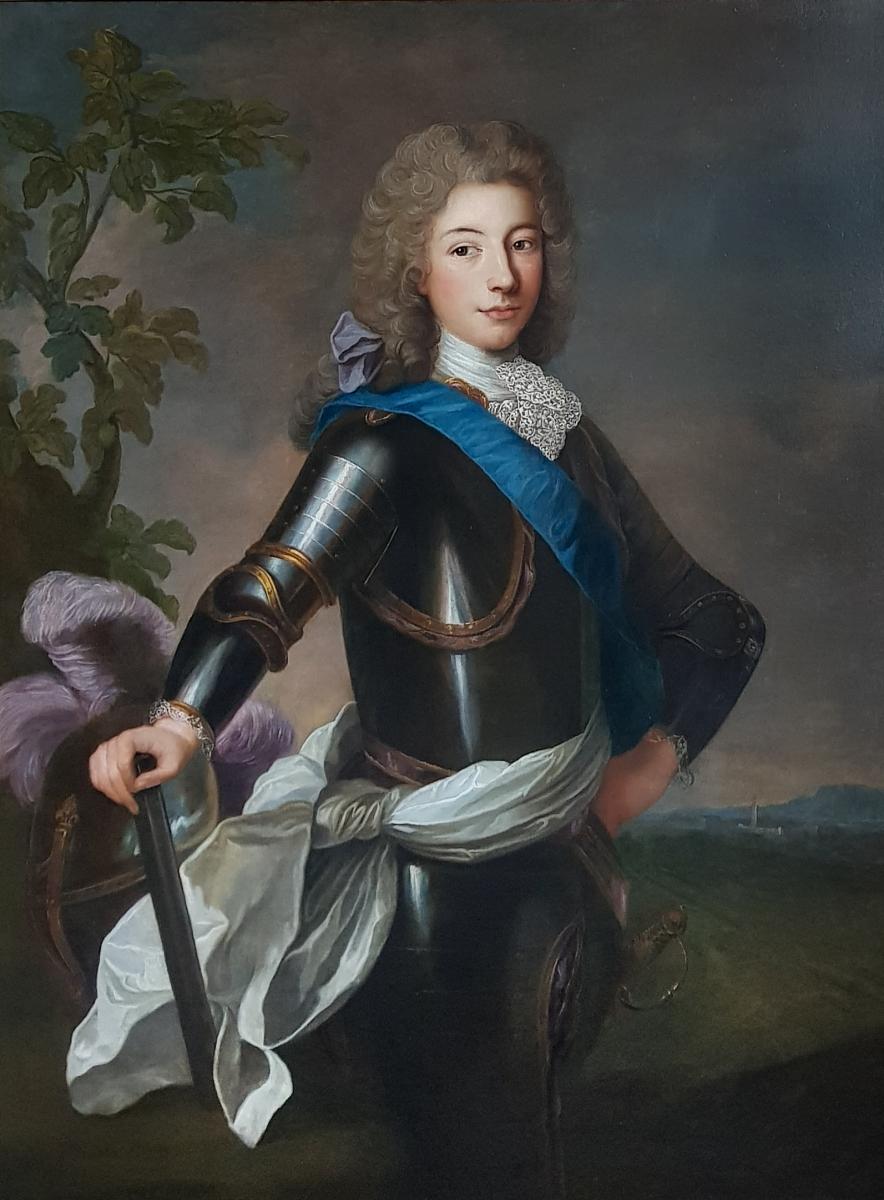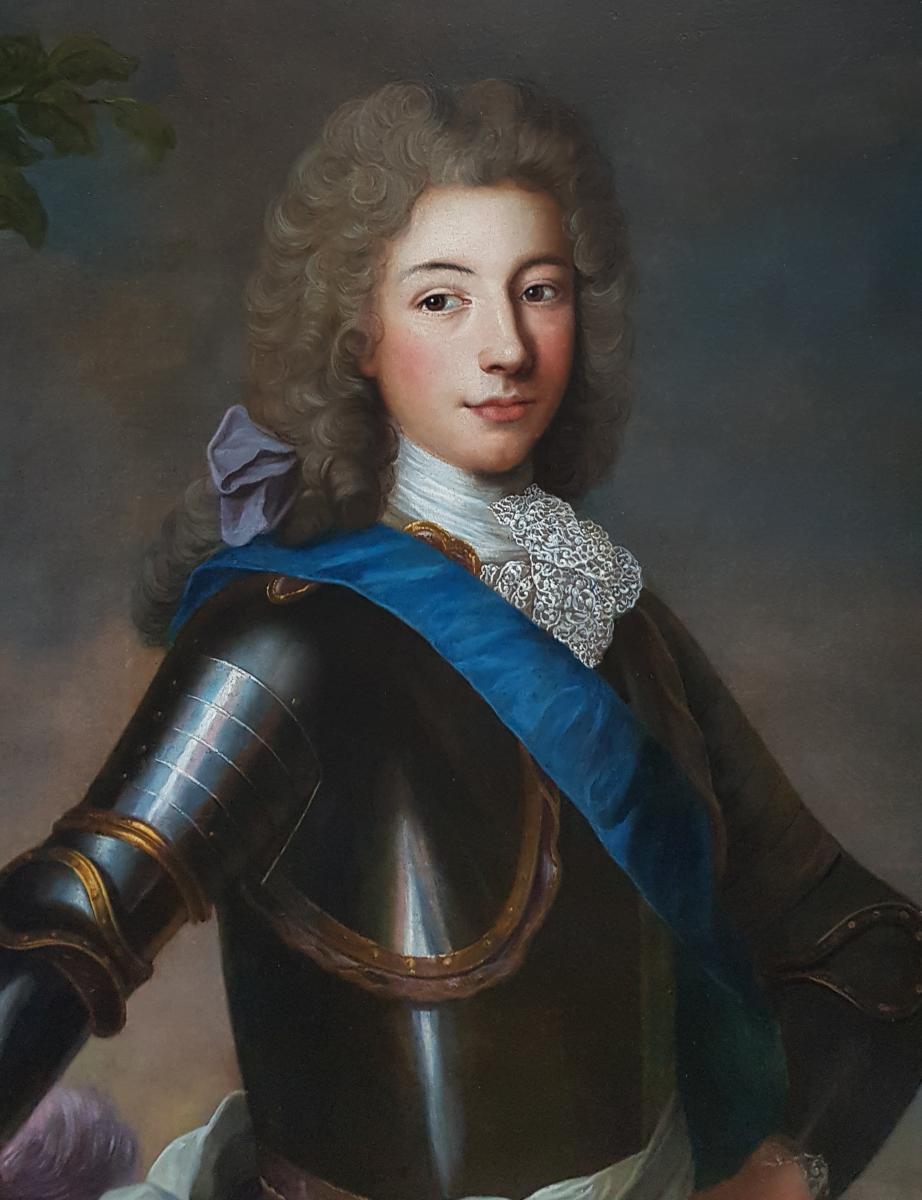"Portrait Of Louis François De Bourbon, Prince Of Conti C.1727 Studio Of Pierre Gobert 1662-1744"
This exquisite large-scale portrait depicts the young Prince de Conti, Louis François de Bourbon (1717-1776) who was a member of the French royal Bourbon dynasty, and pretender to the Polish throne. Louis François was a brave and skilful general, and a diligent student of military history – elements clearly denoted in this portrait. Set in a woodland with a town on the horizon, he wears glittering armour over a lace cravat, a large white sash, and the blue order of the Holy Spirit. The high rank of this valiant prince is denoted through the gleaming armour, the baton of command, and the large plumage in the helmet. The present painting, deriving from a full-length portrait by Pierre Gobert held at Versailles, has been skilfully rendered and it abounds with ingenious flourishes and a dazzling portrayal of the armour. It is no wonder Pierre Gobert was favoured at the French court during the reign of Louis XV. This studio painting would almost certainly have been produced for a member of the French Court. A same sized identical portrait, autographed, sold in Vienna, Dorotheum for 32,000 euro April 9, 2004, lot 516.
Louis François was the Prince of Conti from 1727 to his death, following his father, Louis Armand II de Bourbon. His mother was Louise Élisabeth de Bourbon, the daughter of Louis III, Prince of Condé and Louise Françoise de Bourbon, daughter of King Louis XIV of France. The de Conti princes were the third branch according to seniority, after the Orleans and Condé branches. These branches had the right to bear the rank of so-called Princes du Sang (or Princes of the Blood).
Louis François I de Bourbon was born in Paris. In 1731, he married Louise Diane d'Orléans, Mademoiselle de Chartres, who was the youngest daughter of Philippe II, Duke of Orléans and his wife, Françoise-Marie de Bourbon, daughter of King Louis XIV and Madame de Montespan.
Louis François possessed considerable talent as a soldier and distinguished himself during the Seven Years’ War. When the War of the Austrian Succession broke out in 1741, he went to Bohemia where his services led to his command of the army in Italy. He distinguished himself by forcing the pass of Villafranca and winning the battle of Coni in 1744. In 1745, he was sent to check the Austrians in Germany. In 1746, he was transferred to the Netherlands, where conflicts with the Maréchal de Saxe led to his retirement in 1747.
Louis François was a candidate for the Polish throne. In this effort he was privately supported by his cousin King Louis XV, even though official French policy supported the candidate of the Saxon dynasty. This led to an interesting situation where the French royal ministers supported the Saxon candidate while King Louis XV indirectly supported Louis François through his private channels. Louis XV’s secret policy led to the birth of an entire secret service, called Secret du Roi. Several notable Frenchmen participated in it, including Pierre de Beaumarchaise and the duc de Noailles. Prince de Conti failed to become the King of Poland, but the Secret du Roi continued working its operations in other matters.
At the outbreak of the Revolution in 1789 he emigrated but refused to share in the plans for the invasion of France and returned to his native country in 1790. Arrested as a monarchist by order of the National Convention in 1793, he was acquitted but was reduced to poverty by the confiscation of his possessions. He afterward received a pension, but the Directory banished him from France, and, because he refused to share in the plots of the royalists, he lived at Barcelona until his death in 1814, when the House of Conti became extinct.
Louis François was one of the most ambitious and prominent collectors at the end of the Ancien Régime having acquired a vast collection. His collection was sold only one year after his death and there were approximately 3500 lots: they comprised 1085 pictures, 392 drawings, terracottas, Egyptian, Classical and contemporary bronzes, medals and jewellery, among other items. A number of portraits of the Prince are in existence; as paintings or engravings there are four at the château of Versailles.
Pierre Gobert (1662-1744) was from a family of artists. He trained with his father, a sculptor, and was working as a court portraitist in 1682 at the age of twenty. In 1701 he was accepted as a candidate member and later admitted to full membership in the Académie Royale de Peinture et de Sculpture. He sent seventeen portraits of members of the royal family and other courtiers and important sitters to the 1704 Salon. Between 1707 and 1709 he was in Lunéville, painting Léopold, duc de Lorraine (1679–1721) and his wife, Élizabeth Charlotte d'Orléans (1676–1744). He was a prolific painter and was favoured at the French royal court and his work can be viewed at many good museums worldwide including a large collection at France’s Palace of Versailles, London’s V&A Museum, New York’s Metropolitan Museum of Art, Chantilly’s Condé museum, Le Mans’ Museum of Tessé, Tours’ Museum of Fine Arts, and a large portrait in the throne room of the Monaco Palace (painted between 1715 and 1733).
Provenance: A French noble family and by descent
Measurements: Height 135cm, Width 106cm framed (Height 53”, Width 41.75” framed) 


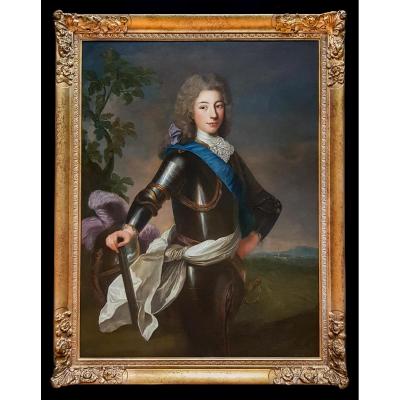
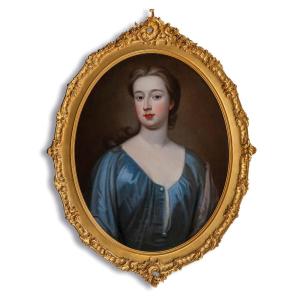
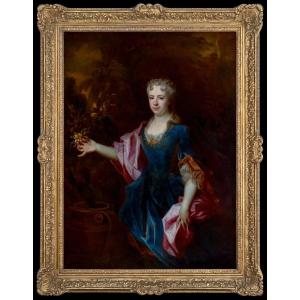
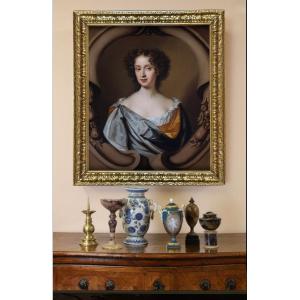




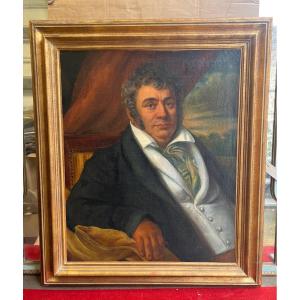
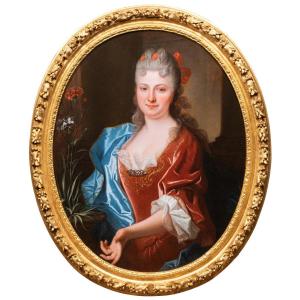

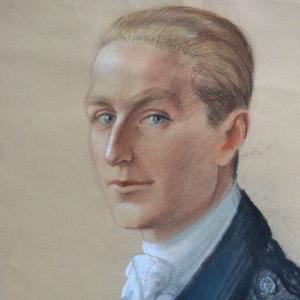
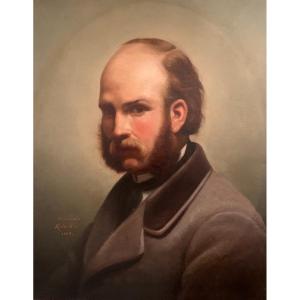




 Le Magazine
Le Magazine Rivista Artiquariato
Rivista Artiquariato TRÉSORS magazine
TRÉSORS magazine

